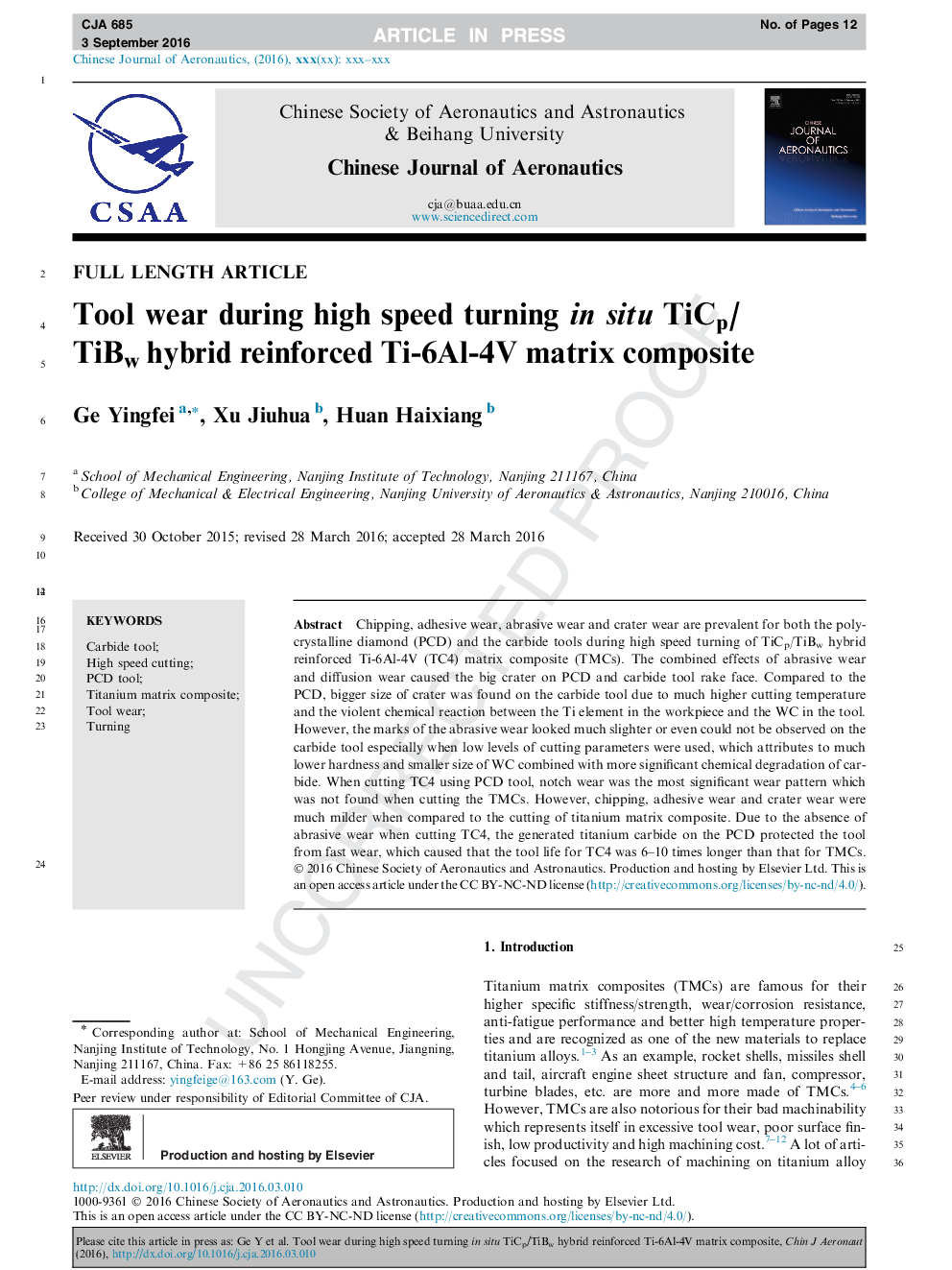| Article ID | Journal | Published Year | Pages | File Type |
|---|---|---|---|---|
| 7154363 | Chinese Journal of Aeronautics | 2016 | 12 Pages |
Abstract
Conclusions: (1) Edge chipping, peeling, adhesive wear, abrasive wear and crater wear were presented on the PCD tool when high speed turning TMC. High cutting speed and high cutting temperature improved the diffusion of the Ti element of the TMC workpiece into the PCD tool and caused the degradation of the diamond and the formation of titanium carbide on the tool. (2) Cutting TC4 with PCD tool, chipping, adhesive wear, crater wear and notch wear were the main wear patterns, among which the notch wear was the most significant. Due to the absent of abrasive wear, the generated titanium carbide on the tool cutting face protected the tool from fast wear,, and hence tool life of PCD for TC4 was 6-10 times longer than that for TMC. (3) When high speed turning TMC using carbide tools, the chemical reaction between the Ti element and the WC was more violent, which produced bigger crater wear on the carbide tool. Although the tool wear rate for the carbide was much higher than that for the PCD, the marks of the abrasive wear on the carbide tool looked much slighter or even couldn't be observed, which attributes to the much lower hardness and smaller size of WC combined with the more significant chemical degradation of the carbides.
Related Topics
Physical Sciences and Engineering
Engineering
Aerospace Engineering
Authors
Ge Yingfei, Xu Jiuhua, Huan Haixiang,
